Mystery Wrench Manufacturer Identified…
Okay, that turned out to be easier than I suspected. I haven’t gotten around to derusting the mystery wrench, but I did do a little bit of simple cleaning, and when I did that, I discovered a couple of markings that were quite helpful.
As in, it gave the entire game away.
The manufacturer is the Verona Tool Works, and was stamped on one side of the wrench under a bunch of grease. A little googling on line revealed that their trademark that I took a rubbing of yesterday.
It consists of a lower V, a T across the top, and then the W running across the middle. A perfect match to what I observed. Sadly, the catalog on the web doesn’t seem to include any of the “alligator style” wrenches like this one. I’m unsure what that means, but a reasonable hypothesis would be that this wrench is of more modern vintage. I’ll try to do more research on this topic.
But a couple of additional markings became visible. I had seen a couple of round letters that I thought might be a double zero, but upon good cleaning, I see them as So. Pac. Co., or the Southern Pacific Corporation, which is indeed a rail line.
Additional markings include a 2×2 array of the letter H (initials? not sure…) and a rather odd set of straight lines and ticks that look purposeful. Both sets of marking appear to be stamped or etched in, rather than cast like the No. 3 and the trademark. I’ll to get decent pictures sometime soon.
I haven’t been able to figure out a date yet. The Southern Pacific Co. remained by that name until merging with the Sante Fe to become the Sante Fe Southern Pacific in 1984, so this obviously predates that. But I think it’s older than that. These kind of wrenches are often listed as useful for steam locomotives, and the Southern Pacific retired its last steam locomotive in 1957. If I were to guess by it not appearing in the 1920s catalog, it might be from the 1930s or so, but more research is clearly needed. I did find a similar wrench on the National History museum website, which similarly dates their version (with a different trademark) from 1900-1955.
If I learn more, I’ll update here.
Addendum: I snapped some quick picks of the various marks.
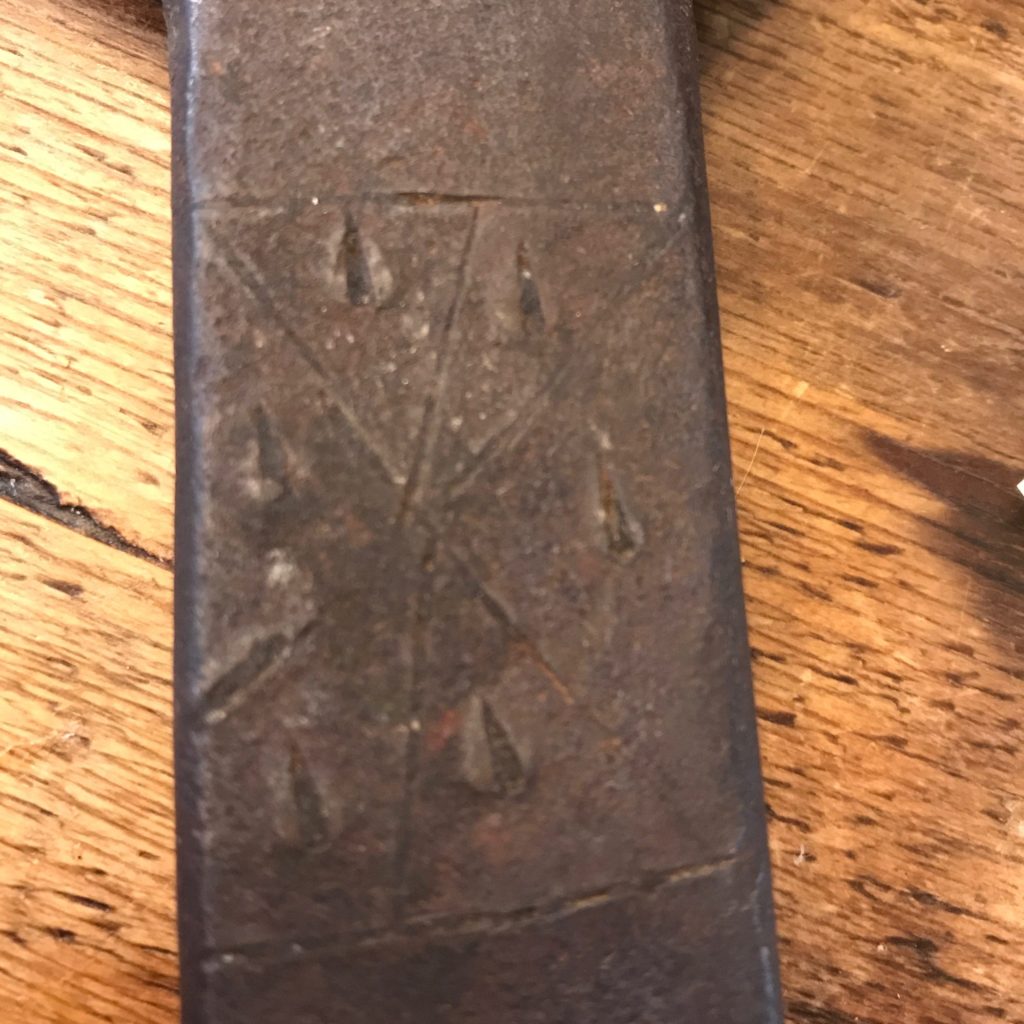
Mystery mark, six divisions, with a tick in each? 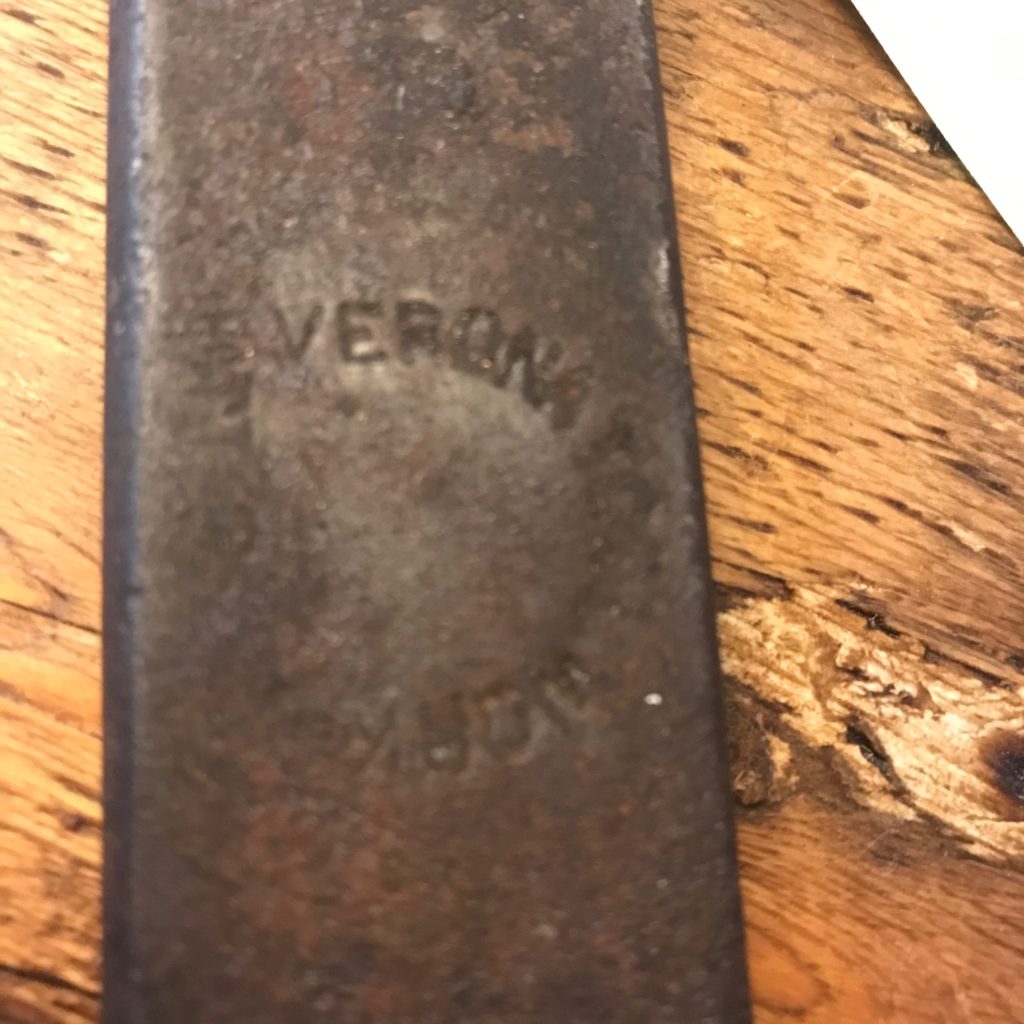
Verona Toolworks 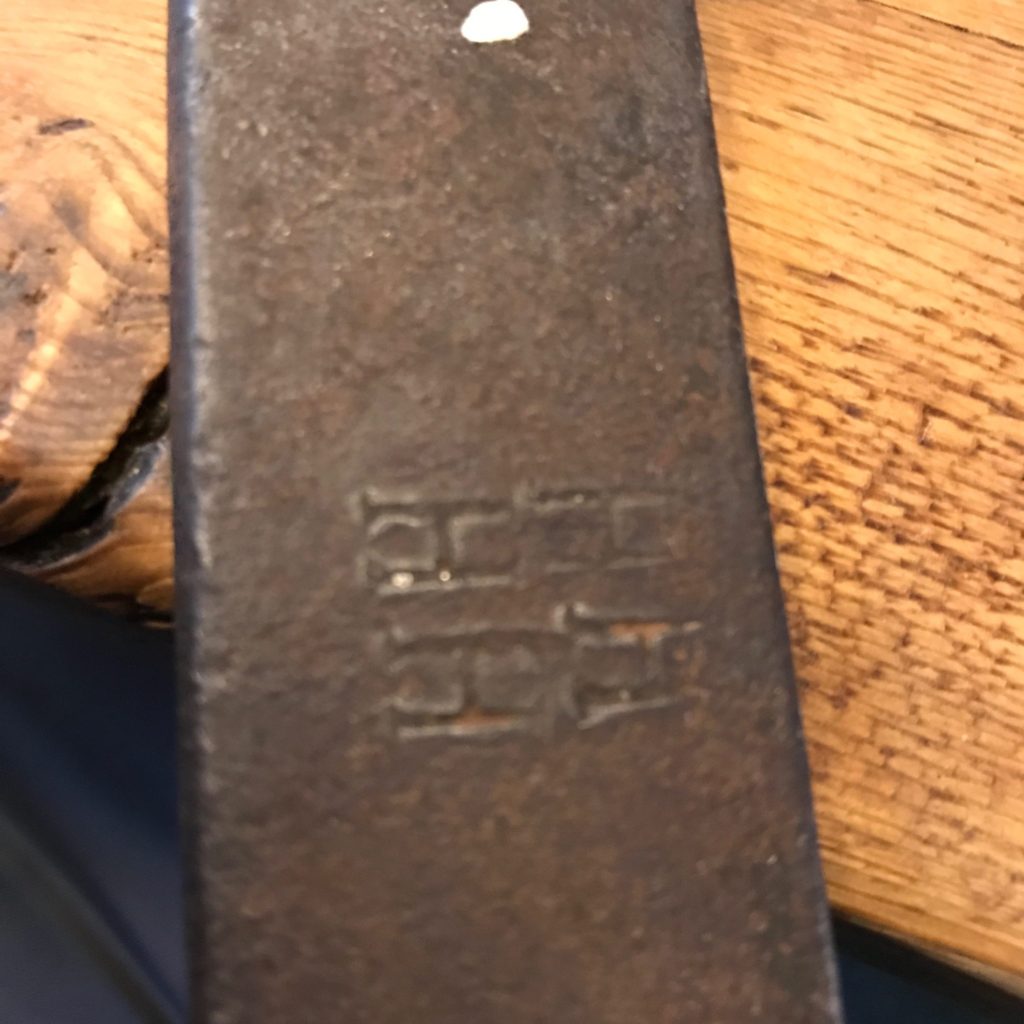
H H H H? 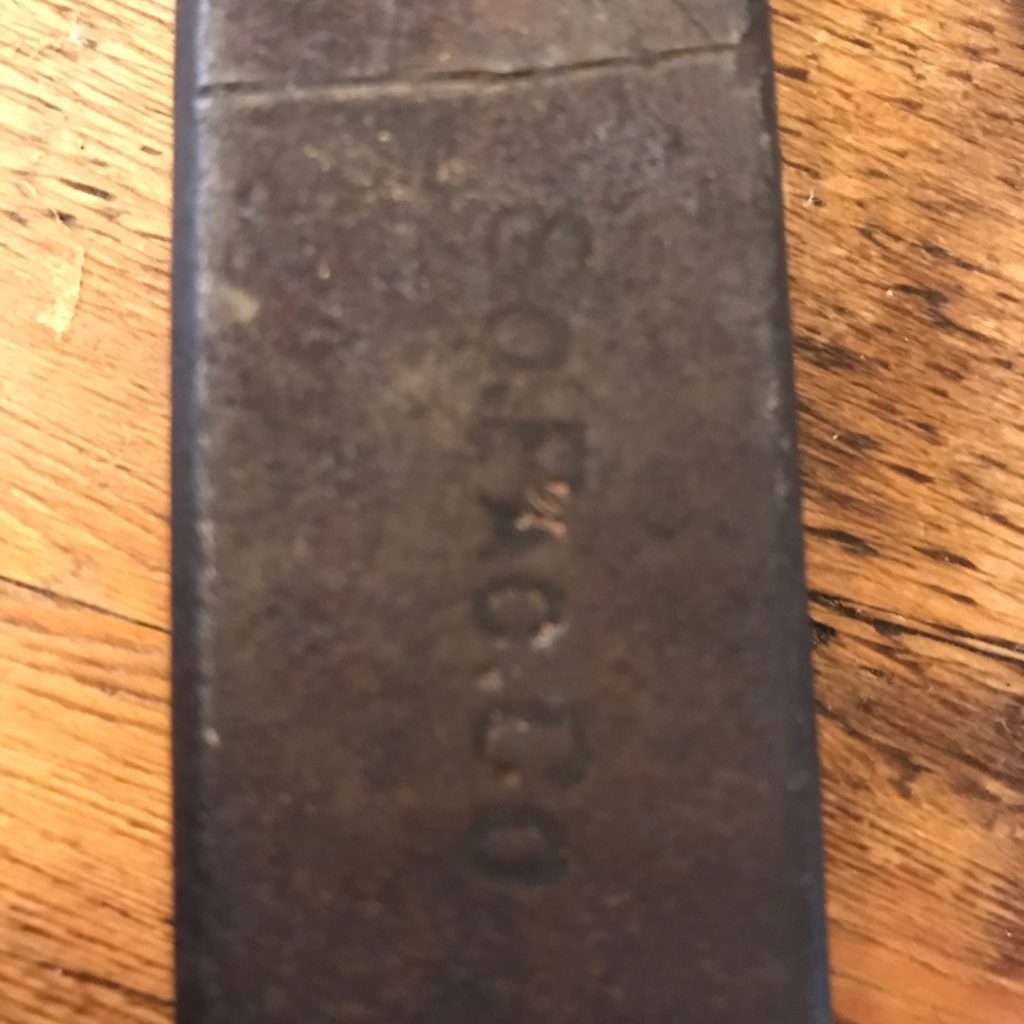
So. Pac. Co 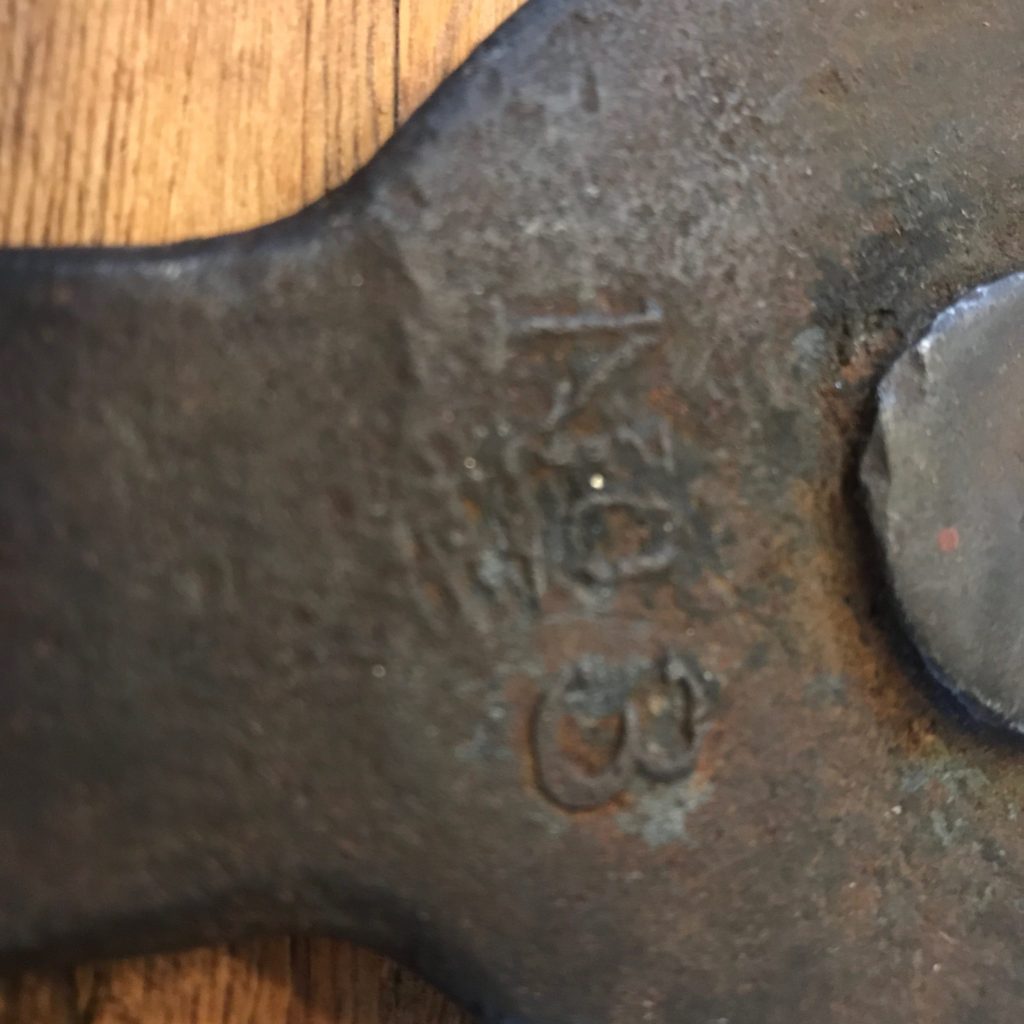
No 3 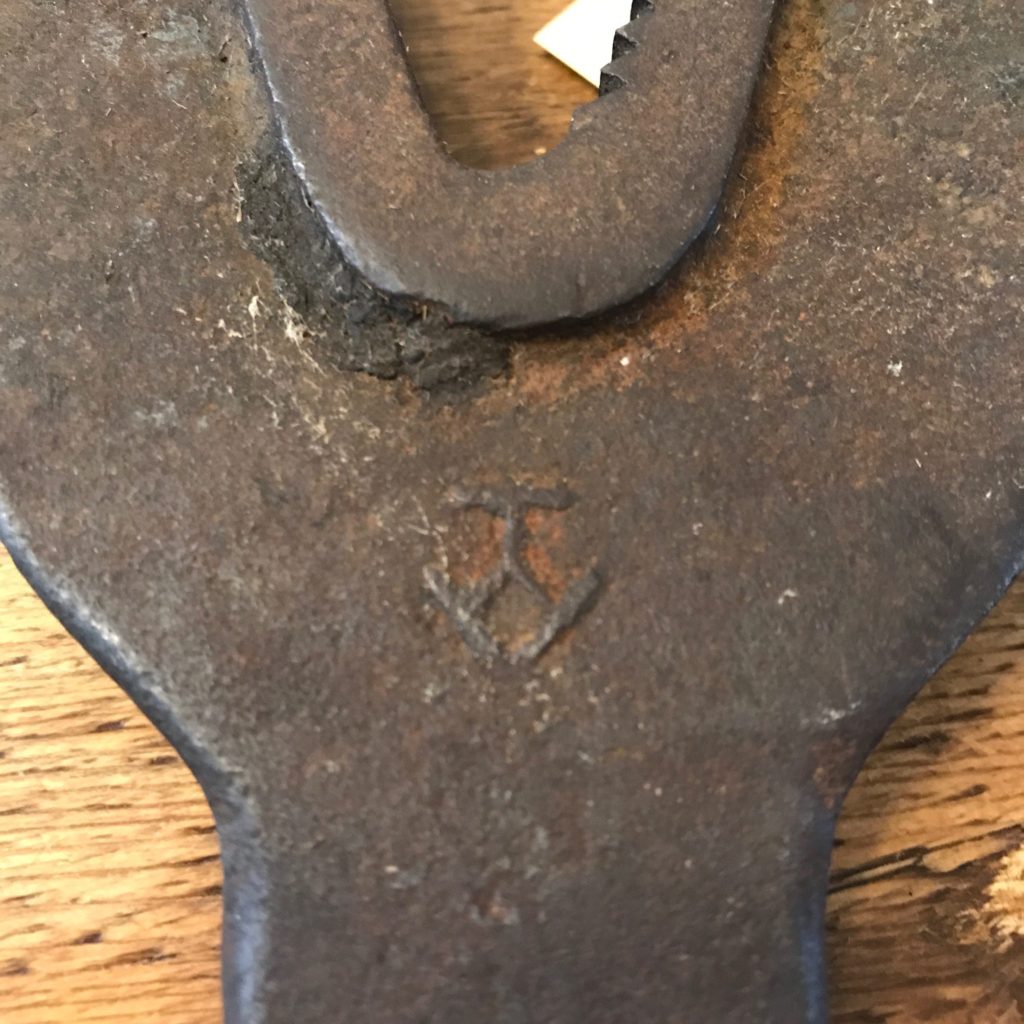
The Verona Toolworks Trademark
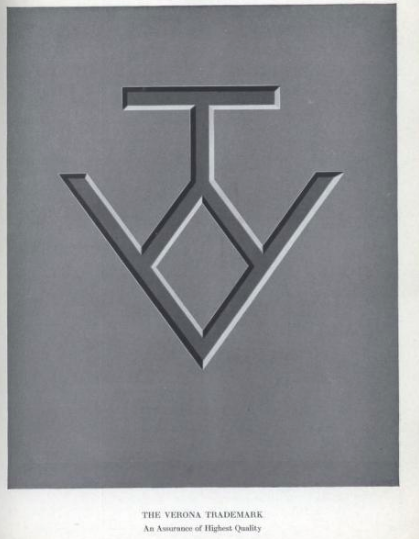
I recall burning three or four weeks of a sabbatical getting Saccade.com on the air with Wordpress. So much tweaking…